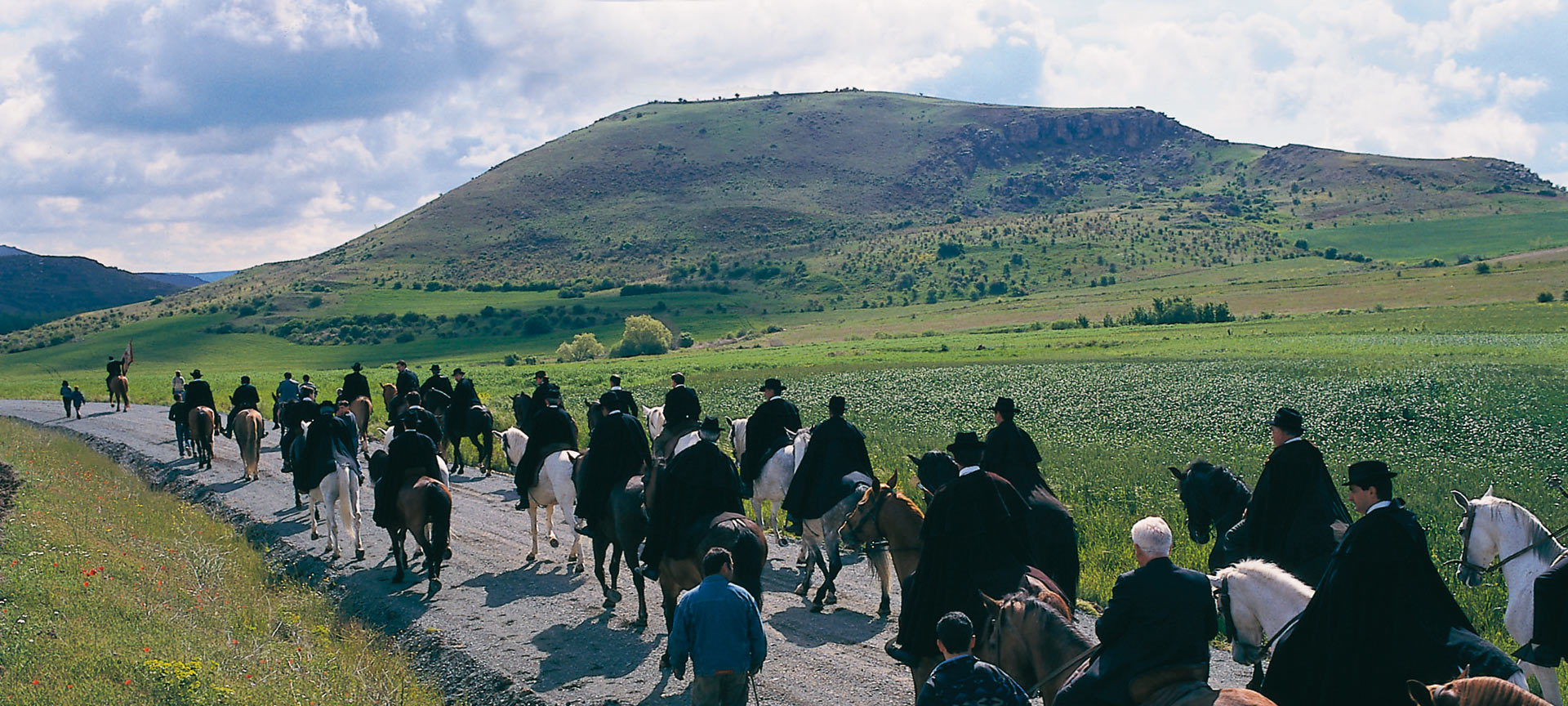Source:Sonrisas en el camino
Festivals and customs
Popular festivals that draw on the most ancestral tradition, that are based on events that took place or romantic legends to feed stories and passions. Customs that go back a long way and that have a reason or a principle. Such is the case of the famous Caballada de Atienza, in Guadalajara.
This popular festival, with its roots and tradition, is one of the oldest in Spain. Declared to be of national tourist interest, it takes place every Pentecost Sunday and its riders, the protagonists of the races, are the members of the Brotherhood of the Holy Trinity, one of the oldest groups in Castile. But how did this festival come about and what is it commemorating? To explain it, we will travel back to the 12th century.
The Child King
In 1157 King Alfonso VII died and divided the kingdom between his two sons. He left the Kingdom of León to his son Fernando and the Kingdom of Castile to Sancho III, who would reign as Sancho III. But he died in 1158, only a year after his father, leaving the kingdom of Castile in the hands of his three-year-old son Alfonso, the future Alfonso VIII, the star of Navas de Tolosa (which deserves a long article).
Sancho III had stipulated in his will that the guardianship of the young Alfonso would be exercised by the Castro family. But another noble and influential family, the Lara family, who wanted this position, took advantage of the situation to snatch the little king by force. The Castros, powerless in the face of the confusion and the kidnapping, asked for help from the King of León, who saw an opportunity, in the dispute between the Lara and the Castros, to take control of Castile.
The Lara and the Castros
In this intense struggle, in which the Lara were already acting as tutors and influencing the young Alfonso, Manrique Pérez de Lara agreed to hand over the king to the Castros in the city of Soria. But while he was there, Pedro Núñez de Fuenteamegil managed to get him out and take him first to San Esteban de Gormaz and then to Atienza, which was well fortified and protected. The city soon came under heavy siege by Ferdinand II of León.
The Lara family had to act quickly to avoid losing the young king’s guardianship, so one day in the spring of 1163, when Alfonso was 8 years old, the muleteers of Atienza, dressed as usual and with the intention of making a pilgrimage to the hermitage of the Virgin of Estrella, left the city on their horses. Among them, dressed like a muleteer, was Alfonso, the future king of Castile. At the little hermitage, they pretended everything was normal and held a pilgrimage.
The Caballada
The vigilant sentinels from León, the besiegers of Atienza, on seeing the horses and the celebration, relaxed their duties and overlooked the important details. Thus, faced with this situation, faced with this opportunity, they took Alfonso, first to Segovia and then to Ávila, taking him to safety. The flight lasted 7 days, 7 days that are also commemorated by celebrating the day before Pentecost, the Saturday of the 7 tortillas.
Since then, since that first departure, the members of the Brotherhood of the Holy Trinity, heir to the old muleteers’ brotherhood and popularly known as “de la Caballada”, remember the event on the back of their horses, dressed in the old style and to the sound of drums and dulzainas.
Alfonso VIII was greatly influenced by the Lara family, an influence that marked the character of what was later to become a great King, worthy of books and films. The terrible defeat of Alarcos, the border of the Guadiana, the disputes, intrigues and struggles for territory, the castle of Salvatierra, the Almohad threat and the glory of the Battle of Navas de Tolosa, with the charge of the three kings, to open the gates of Andalusia to the reconquest.
Details for history, traditions and legends, events that should not be forgotten and deserve to be remembered. The Caballada de Atienza is one of them, a fiesta that drinks in time, history and tradition.
Share this article
On This Day
- 1528 Prince Felipe is sworn as heir to the Spanish kingdoms in Madrid.
- 1593 The city of San Salvador de Jujuy (Argentina) is founded by Francisco Argañaraz y Murguía.
- 1776 Battle of Lexington and Concord (United States).
History of Spain
26 August 2020
27 January 2021
Communism: Now and Then
23 December 2022
28 July 2021






